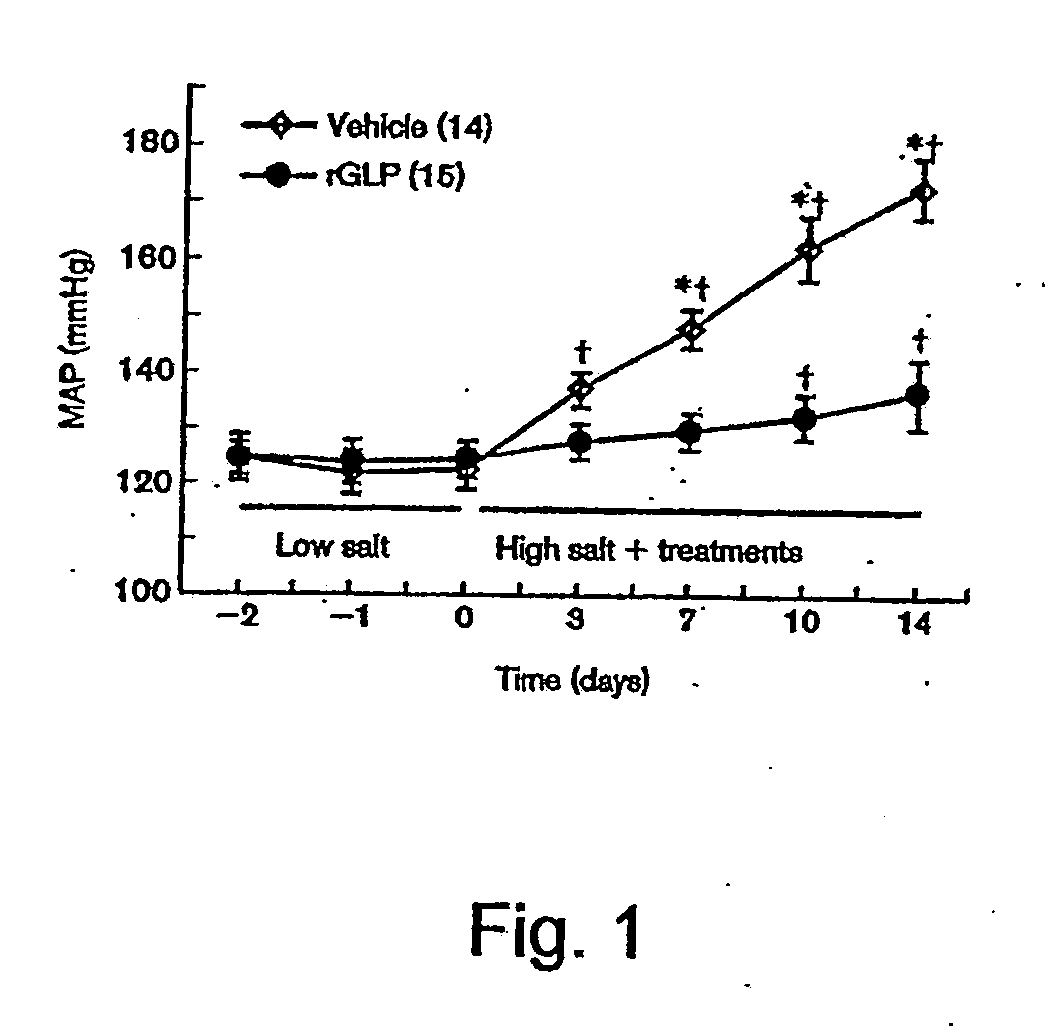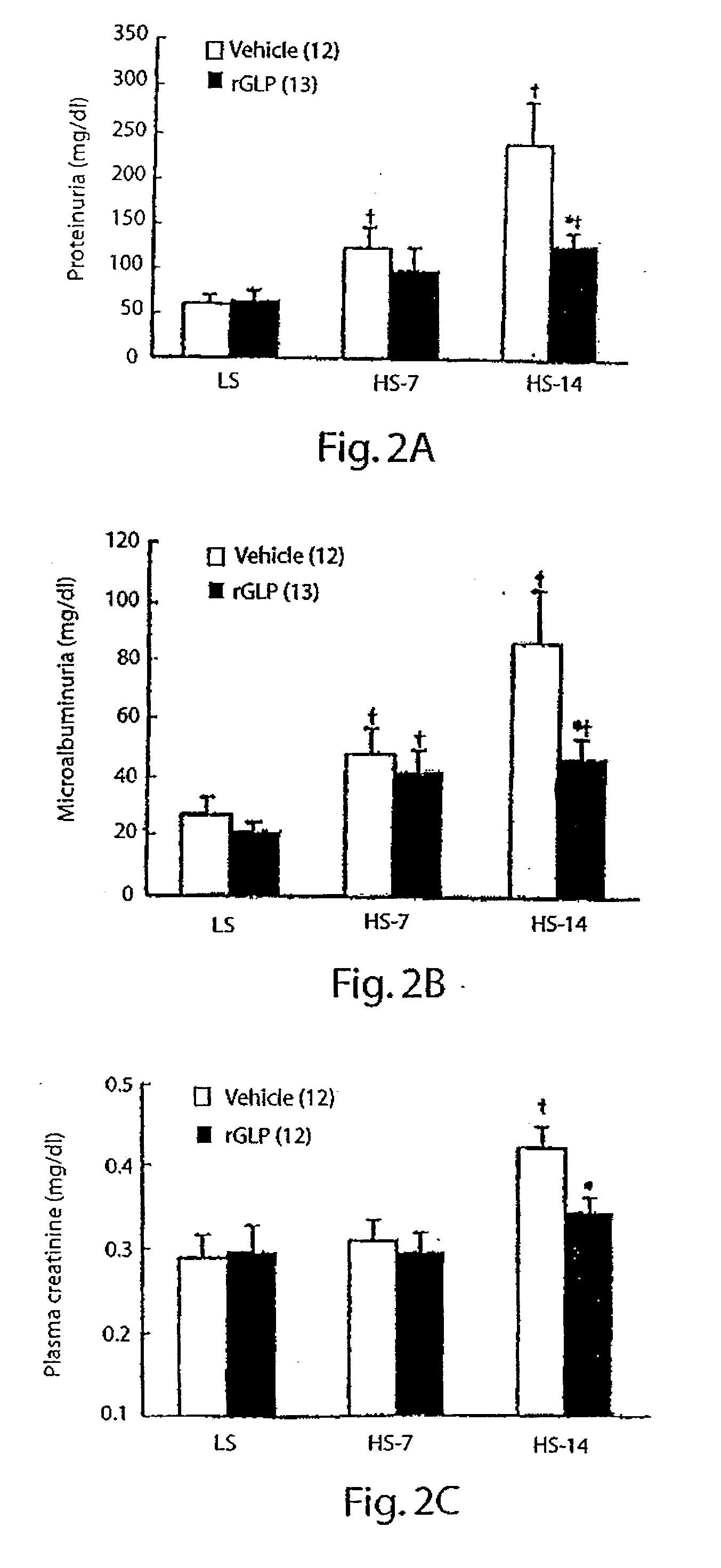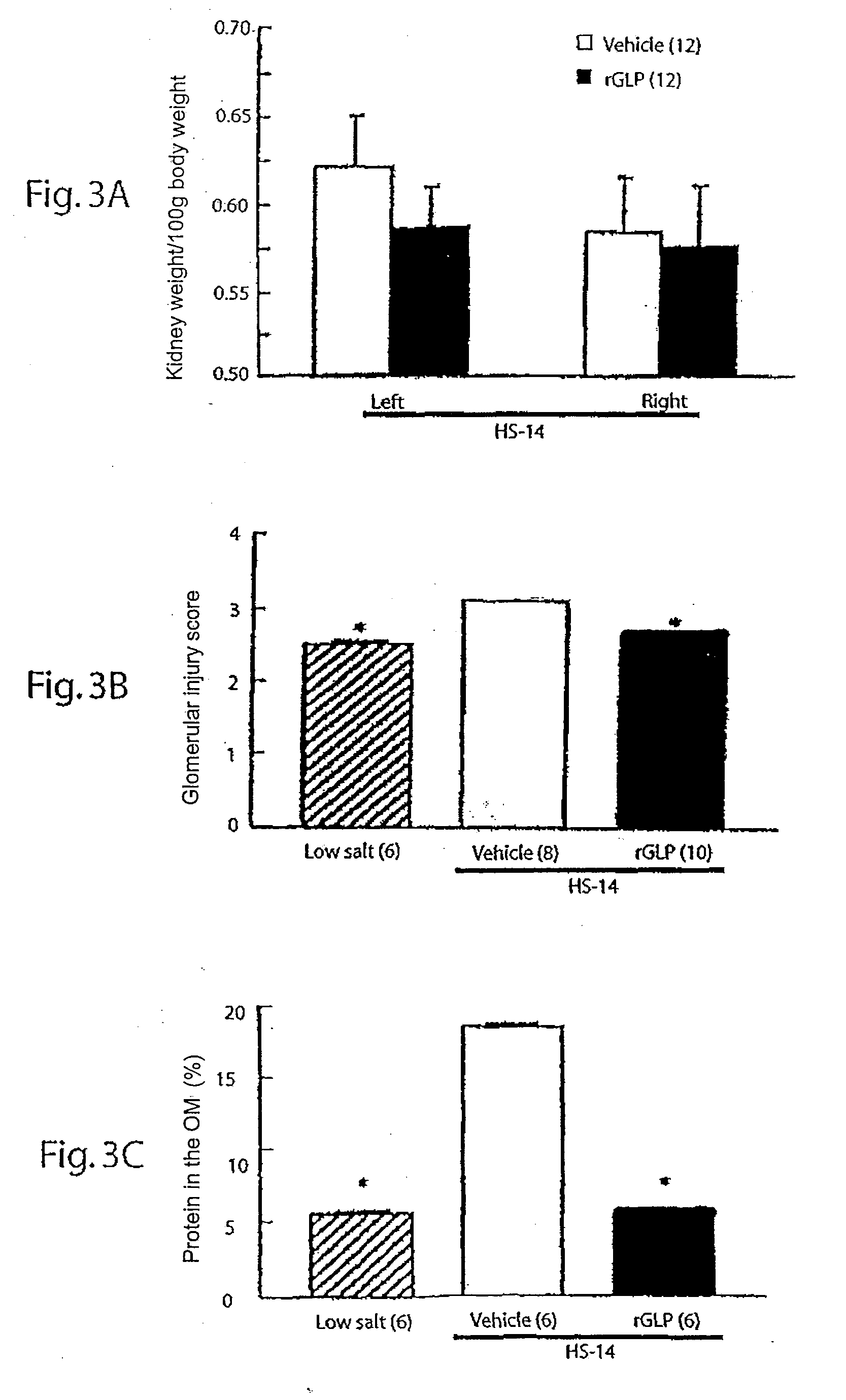Compositions for the Treatment and Prevention of Nephropathy
a nephropathy and composition technology, applied in the field of composition and treatment of nephropathy, can solve the problems of reducing the capacity of the kidney to filter/secrete waste products, reducing the capacity of the kidney to maintain electrolyte and water balance, and esrd, so as to improve the endothelial function, reduce the vasodilatory capacity, and reduce the effect of glomerular flow
- Summary
- Abstract
- Description
- Claims
- Application Information
AI Technical Summary
Benefits of technology
Problems solved by technology
Method used
Image
Examples
example 1
Methods
[0492]Experiments were performed on male Dahl sensitive / Jr (Dahl S) rats maintained on a low salt diet (0.1% NaCl) from birth to prevent the development of hypertension. When the rats were 9 weeks old, they were anesthetized with an i.m. injection of ketamine (40 mg / kg), xylazine (2.5 mg / kg), and acepromazine (0.6 mg / kg) and catheters were implanted in the femoral artery and vein for chronic measurement of MAP (mean arterial pressure) and i.v. infusion (10 ml / day). The rats received an i.m. injection of enrofloxacin (Baytril, 2.5 mg / kg) to prevent infections and were given 4-5 days to recover from surgery.
[0493]Evaluation of Effects of rGLP-1 on MAP and Renal Dysfunction
[0494]MAP was measured on 3 consecutive days and a blood sample and an overnight urine sample was collected during the control period while the rats were maintained on a low salt diet (0.4 NaCl) and infused with the vehicle for recombinant glucagon-like peptide-1(7-36)amide (rGLP-1) (5% mannitol solution on 0....
example 2
Effect of RGLP-1 on the Development of Hypertension
[0499]Rats were maintained on a low salt diet (0.4% NaCl) during the 3 day control period. The rats were then switched to a high salt diet (8% NaCl) and received either rGLP-1(1 μg / kg / min) or vehicle. FIG. 1 indicates the development of hypertension in vehicle-treated rats upon initiation of a high salt diet, and the protection afforded by administration of GLP-1. Numbers in parentheses indicate the number of rats studied. * indicates P<0.05 versus vehicle treatment and +indicates P<0.05 versus control value measured on a low salt diet. Baseline MAP measured while the rats were fed a low salt diet was similar in the rats subsequently treated with rGLP-1 or vehicle and averaged 122±2 mmHg. MAP increased to 174±6 mmHg in the vehicle-treated Dahl S rats fed a high salt diet for 14 days. In contrast, the rise in MAP was significantly attenuated and MAP only rose to 136±7 mmHg in the rats infused with rGLP-1.
example 3
Effect of RGLP-1 on Renal Dysfunction
[0500]The effects of rGLP-1 on the development of proteinuria, microalbuminuria and plasma creatinine concentration (indicators of renal damage and nephropathy) in Dahl S rats fed a high salt diet are presented in FIG. 2. Rats were maintained on a low salt diet (0.4% NaCl) during the 3 day control period. The rats were then switched to a high salt diet (8% NaCl) and received either rGLP-1(1 μg / kg / min) or vehicle. LS: low salt diet, HS-7 or -14: 7 or 14 days after high salt diet. Numbers in parentheses indicate the number of rats studied. * indicates P<0.05 versus vehicle treatment and +indicates P<0.05 versus control value measured on a low salt diet. The excretion of protein and albumin increased significantly after 14 days on a high salt diet in Dahl S rats treated with vehicle (FIGS. 2A and 2B). This was associated with a significant increase in plasma creatinine concentration, an index of glomerular filtration rate (GFR, FIG. 2C). Chronic adm...
PUM
| Property | Measurement | Unit |
|---|---|---|
| blood pressure | aaaaa | aaaaa |
| concentration | aaaaa | aaaaa |
| insulin resistance | aaaaa | aaaaa |
Abstract
Description
Claims
Application Information
 Login to View More
Login to View More - R&D
- Intellectual Property
- Life Sciences
- Materials
- Tech Scout
- Unparalleled Data Quality
- Higher Quality Content
- 60% Fewer Hallucinations
Browse by: Latest US Patents, China's latest patents, Technical Efficacy Thesaurus, Application Domain, Technology Topic, Popular Technical Reports.
© 2025 PatSnap. All rights reserved.Legal|Privacy policy|Modern Slavery Act Transparency Statement|Sitemap|About US| Contact US: help@patsnap.com



